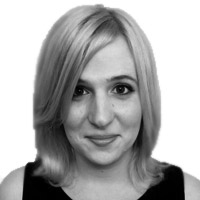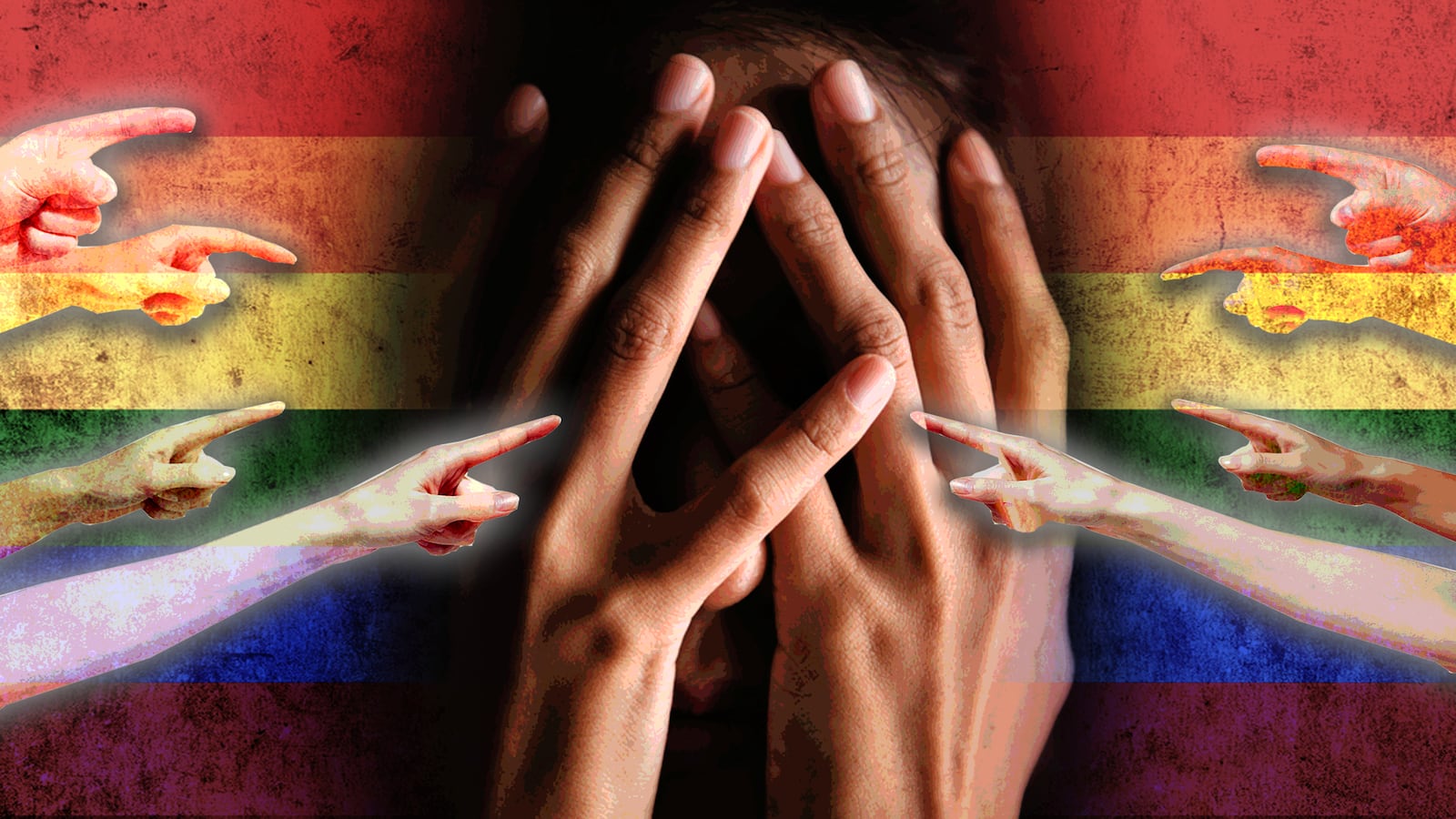Legal scholar Kimberlé Crenshaw’s theory of intersectionality—the idea that the different aspects of our identities are like roads, and that those who live at particular intersections experience unique forms of discrimination—has been used since 1989 to explore the ways in which racial prejudice can amplify other forms of bigotry.
Now, when it comes to the differences between the experiences of white LGBTQ people and LGBTQ people of color, there is new nationally-representative data that underscores the continuing relevance of that theory.
The new study—a joint project from the Harvard T.H. Chan School of Public Health, the Robert Wood Johnson Foundation, and NPR—shows that LGBTQ people of color were over twice as likely to report experiencing anti-LGBTQ discrimination when applying for jobs and interacting with police than their white peers.
The majority of the 489 LGBTQ adults who responded to the four-month-long phone survey said that they had “experienced slurs,” as well as “insensitive or offensive comments.” Overall—as the study notes—at least “one in five” reported “being personally discriminated against because of their sexuality or gender identity because of their sexuality or gender identity when applying for jobs.”
But looking at LGBTQ people of color specifically, reports of employment discrimination rocket up to 32 percent—nearly one in three.
How much of that discrimination is motivated by racial prejudice and how much of it is driven by homophobia or transphobia? Dr. Logan S. Casey, a political scientist and research associate at the Harvard T.H. Chan School of Public Health who worked on the study, told The Daily Beast that even if it were possible to calculate the different effects, it wouldn’t necessarily prove insightful.
“There are certainly ways to try to tease them out but it gets into almost an existential question of: Is that really an accurate representation of people’s lives?” he told The Daily Beast. “It’s hard to just say, ‘Oh, this happened to me because of my race and not because of my sexual orientation or my gender identity.’”
To an LGBTQ person of color, race and sexual identity are not separable, Casey explains, so why should the study try to artificially separate them?
“It becomes kind of statistically complicated and maybe not actually desirable to pull them apart,” he adds.
Not only did LGBTQ people of color report experiencing disproportionate amounts of employment and police discrimination relative to white LGBTQ people, they were also “six times more likely to say that have avoided calling the police” for fear of discrimination, as the study noted. Only five percent of white LGBTQ people reported being afraid to call the cops versus 30 percent of LGBTQ people of color.
Those findings line up with a 2015 report from the Williams Institute at the UCLA school of law, which outlined the tense relationship between police and LGBTQ people in the United States—particularly LGBTQ people of color.
But the new study places that broader outline into even sharper relief. Although virtually any LGBTQ person can describe personal experiences of day-to-day discrimination, it’s challenging for researchers like Casey—himself a member of the LGBTQ community—to collect that information in the aggregate.
Not many nationally representative studies have been able to explore LGBTQ people’s “personal experiences with discrimination”—the focus of this latest study—or even LGBTQ people’s experiences more generally.
“One of the [reasons] is that people may be less willing to tell a stranger on the phone that they’re LGBTQ for obvious reasons that the poll highlights,” Casey says, noting the irony that anti-LGBTQ stigma makes it harder to collect information about the effects of said stigma. “And another [reason] is that, relative to the whole population, it’s a fairly small group.”
The latest Gallup data suggests that just four percent of the U.S. population identifies as LGBT—but the demographer who produced that estimate has previously told The Daily Beast that “we’re still quite a bit aways” from knowing the true size of the LGBT population in America given continuing and pervasive prejudice
Casey told The Daily Beast that the research team tried to make respondents as comfortable as possible identifying as LGBTQ by “mak[ing] the language in the survey be as culturally competent as possible.”
“I’m queer and I’m transgender so I had a lot of things to say about how we were wording the questions to make it clear that … this isn’t some outsider group coming in and trying to do research on you, but rather trying to really listen to and capture the experiences of people in their own words as much as possible,” he explained.
But the numbers the researchers were able to uncover despite those logistical challenges are still striking—and far from heartening for the LGBTQ community. Despite advances like the nationwide legalization of same-sex marriage, personal experiences of discrimination are apparently still widespread. One particularly timely example given the recent proliferation of so-called “bathroom bills”: over a third of LGBTQ people said that they or a loved one had “been verbally harassed in the bathroom or been told or asked if they were using the wrong bathroom.”
Given how few transgender people there are in the country—just 1.4 million, per the latest estimate—that data suggests that many in the LGBTQ community, not just transgender people, are having their appearance policed in a bathroom.
Casey says that the findings of the study were, sadly, in line with expectations.
“It didn’t surprise me but I think it was still pretty powerful to see for question after question after question, the numbers line up so high,” he told The Daily Beast.
But if the survey has a silver lining it might be the age gap between young LGBTQ people and their older counterparts when it comes to determining the source of anti-LGBTQ discrimination.
As NPR highlighted, thirty-seven percent of LGBTQ adults age 18 to 29 said that “laws and government policies” are a “bigger problem” than the “prejudice of individual people,” as compared to just 13 percent of LGBTQ people ages 65 and over who said the same thing.
Casey told The Daily Beast that, in the field of political science, this question is indicative of a person’s political engagement, more broadly: people who lay the blame at the feet of the government may be more likely to show up at protests and make calls to representatives.
“The data doesn’t say this explicitly, but it does suggest to me that perhaps younger generations are thinking about [discrimination] on a more systemic level,” Casey told The Daily Beast.
Given the current federal government’s stance on LGBT issues so far, one could argue that this generation of politically-engaged LGBTQ youth is arriving right on time.






